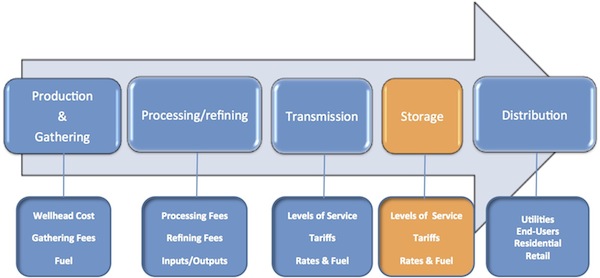Natural gas storage facilities provide the industry with flexibility. During times of “peak” demand such as harsh winters or extremely hot summers, utilities can rely on supplies stored beneath the ground. Likewise, during times of low demand, excess supplies can be stored for when they are needed. For savvy marketers, storage capacity can be used to take advantage of the price fluctuations in the market. There are three main types of storage facilities: depleted oil & gas reservoirs, salt caverns, and aquifers.
The following lecture covers the types of natural gas storage, traditional and current uses, and the industry players who use storage capacity and why.
Key Learning Points for the Mini-Lecture: Storage
While watching the Mini-Lecture, keep in mind the following key points and questions:
- Storage facilities provide "peaking" supply in times of increased need.
- Storage facilities can be used to store excess supply in periods of low demand.
- Storage facilities are largely depleted oil & gas reservoirs but can also be salt caverns and aquifers.
- LDCs have long used storage facilities for supply during extreme cold.
- Electric utilities rely on storage facilities for extra supply during peak air-conditioning loads.
- Marketers use them to provide a variety of value-added services and to take advantage of price swings.
